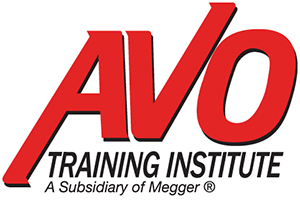Home » Electrical Safety Quiz Answers
Electrical Safety Quiz Answers
 THANK YOU for taking our quiz! Are you really looking to take your Electrical Safety Knowledge to the next level? Check out these Electrical Safety Training Courses!!
THANK YOU for taking our quiz! Are you really looking to take your Electrical Safety Knowledge to the next level? Check out these Electrical Safety Training Courses!!
Here are the answers:
1. One of the three generally recognized hazards of electrical work is____.- A) Cuts
- B) Shock
- C) Falls
- D) Infection
2. Gloves used for electrical protection must be electrically tested every____.
- A) 12 months
- B) Never
- C) 6 months
- D) 3 months
3. Electrical safety equipment should be visually inspected_______.
- A) Prior to use
- B) Daily
- C) Monthly
- D) Weekly
4. OSHA 29 CFR 1910.147 is not adequate for electrical lockout.
- A) Sometimes
- B) False
- C) True
- D) Innocuous
5. Which is the "Can't Let Go" range of current flow?
- A) 1-3 ma
- B) 3-9 ma
- C) 9-25 ma
- D) 25-60 ma
6. Which organization is NOT a source of regulations or standards?
- A) NIOSH
- B) OSHA
- C) NFPA
- D) IEEE
7. Which is not a main factor in accidents?
- A) Employee
- B) Equipment
- C) Environment
- D) Employer
8. What is the voltage rating on a Class 00 rubber-insulating glove?
- A) 120v
- B) 277v
- C) 480v
- D) 500v
9. Unqualified persons may not approach an overhead line energized at 4,160v closer than_____.
- A) 3 m
- B) 10 ft
- C) 6 ft
- D) 3 ft, 6 in
10. NFPA 70E requires the the testing of a volt meter before and after a voltage test on voltage above _______.
- A) 50v
- B) 120v
- C) 600v
- D) 208v
11. Which Subpart of OSHA 29 CFR1910 addresses electrical safety?
- A) V
- B) U
- C) T
- D) S
12. Which NFPA standard provides safe work procedures?
- A) 70
- B) 70B
- C) 70E
- D) All the above
13. Work performed on an electrical system within reaching distance of energized components is________work.
- A) Energized
- B) Safe
- C) Essential
- D) Unavoidable
- A) 1
- B) 2
- C) 3
- D) 4
15. The secondary of a current transformer must never be ____________ while energized.
- A) Opened
- B) Shortened
- C) Examined
- D) Grounded
16. Rod and pipe grounding electrodes must be at least _____feet in length.
- A) 6
- B) 8
- C) 10
- D) 12
17. The minimum allowable workspace around electrical equipment is ________ inches wide.
- A) 30
- B) 36
- C) 48
- D) 24
18. The grounded circuit conductor (neutral) should be bonded to the equipment ground on the _______side of the service.
- A) Left
- B) Right
- C) Line
- D) Load
19. When installing or removing breakers from a cubicle, the breaker must be in the __________ condition.
- A) Pristine
- B) Charged
- C) Closed
- D) Open
20. Which hazard/s can be present around a bank of batteries?
- A) Shock
- B) Acid burn
- C) Explosion
- D) All of the Above
Get our new eMagazine delivered to your inbox every month.
Stay in the know on the latest safety trends.
SUBSCRIBE TODAYCopyright ©2024. All Rights Reserved BNP Media.
Design, CMS, Hosting & Web Development :: ePublishing